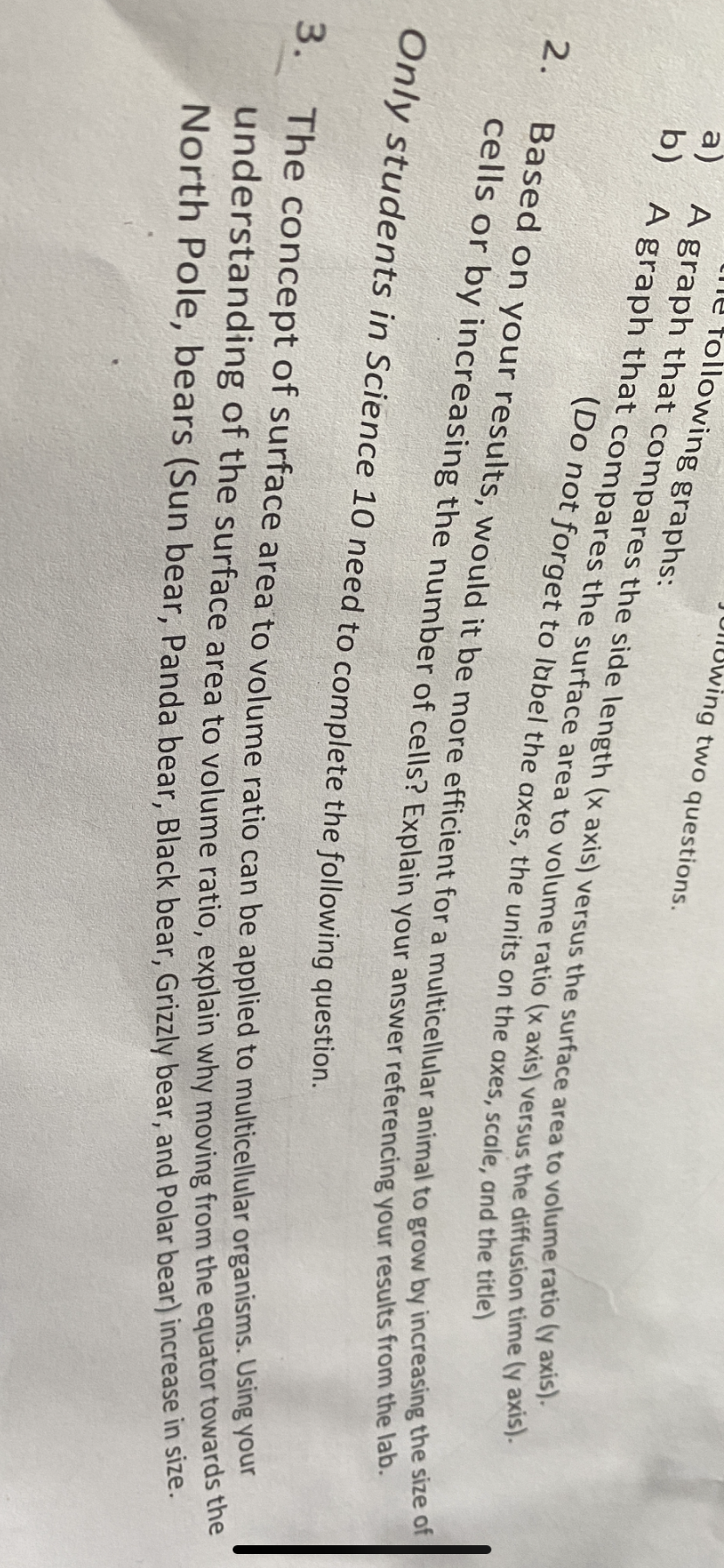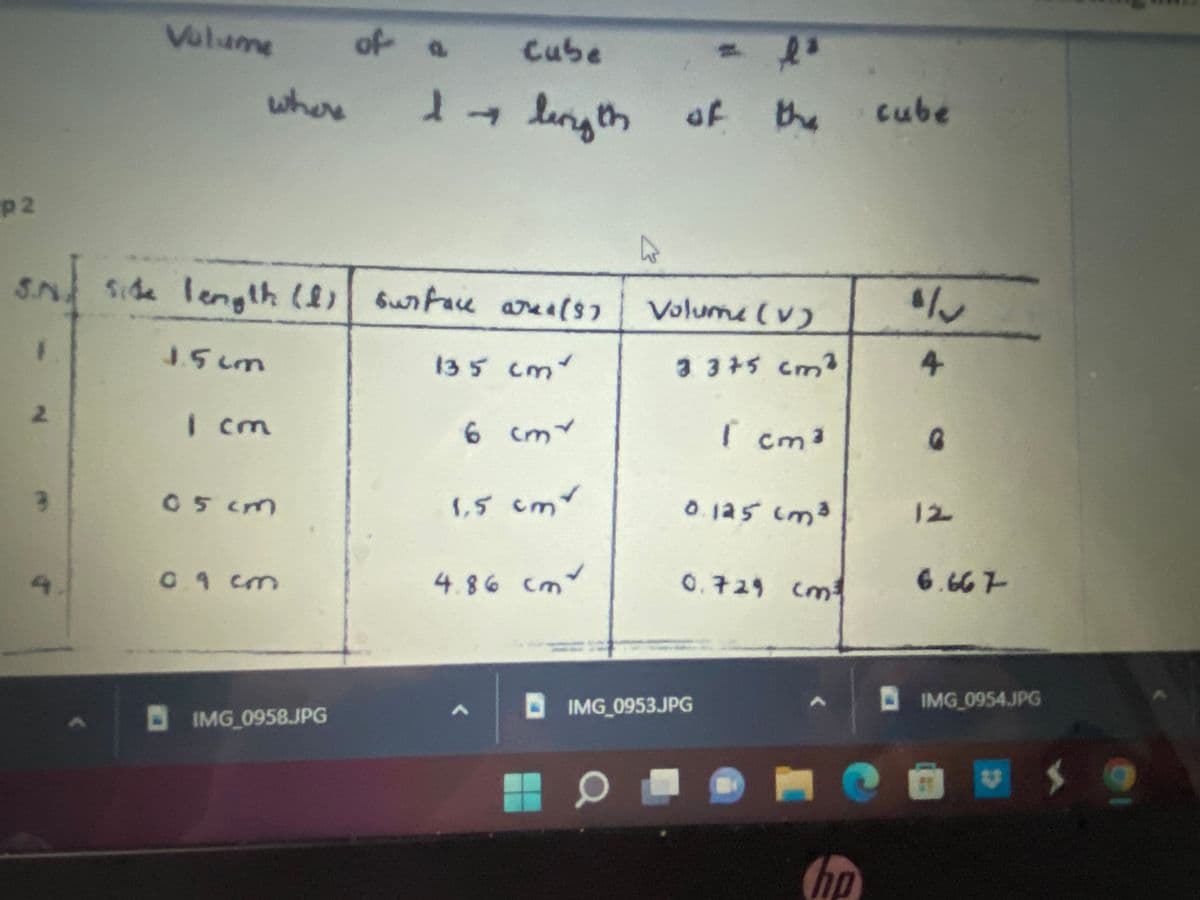wing two questions. llowing graphs: a) b) A graph that compares the surface area to volume ratio (x axis) versus the diffusion time (y axis). A graph that compares the side length (x axis) versus the surface area to volume ratio (y axis). (Do not forget to label the axes, the units on the axes, scale, and the title) 2. Based on your results, would it be more efficient for a multicellular animal to grow by increasing the size of cells or by increasing the number of cells? Explain your answer referencing your results from the lab. Only students in Science 10 need to complete the following question. 3. The concept of surface area to volume ratio can be applied to multicellular organisms. Using your understanding of the surface area to volume ratio, explain why moving from the equator towards the North Pole, bears (Sun bear, Panda bear, Black bear, Grizzly bear, and Polar bear) increase in size. Volume where 1- p2 S.A. side length (1) surface area (3) 1 1.5cm 135 cm 2 1 cm 05cm 0.9 cm 3 4 IMG_0958.JPG of a Cube = fo length of the Volume (V) 6 cm v ✓ 1.5 cm 4.86 cm A ئی 3 3+5 cm² I 1 cm³ 0.125 cm³ 0.729 cm³ A IMG_0953.JPG hp cube 4 G 12 6.667 IMG_0954.JPG
Histology
Histology is the microanatomy method and a branch of biology that studies the anatomy of tissues. It includes viewing tissue in a magnified view under the microscope. Microanatomy also includes the process of study of organs called organology and the study of cells called cytology. Histopathology is a branch of biology that includes microscopic identification of diseased tissue. The field of histology comprises the preparation of the tissues and collection of cells as specimens for examination under the microscope. These processes are done by technicians like histologists, histotechnicians, and biomedical scientists. Histopathology is the diagnosis and research of tissue diseases that require the examination of tissues and/or cells under a microscope. Histopathologists are in charge of determining tissue diagnosis and assisting clinicians in managing a patient's care.
Endocrine System
Human body functions due to the collective work of the organ systems. One of them is the endocrine system. It is a chemical messenger system constituting the hormones directly released by the endocrine glands into the circulatory system. The study of this system is known as endocrinology. The word 'endon' means inside, and 'crine' means secrete, making the word "endocrine."


Trending now
This is a popular solution!
Step by step
Solved in 2 steps









